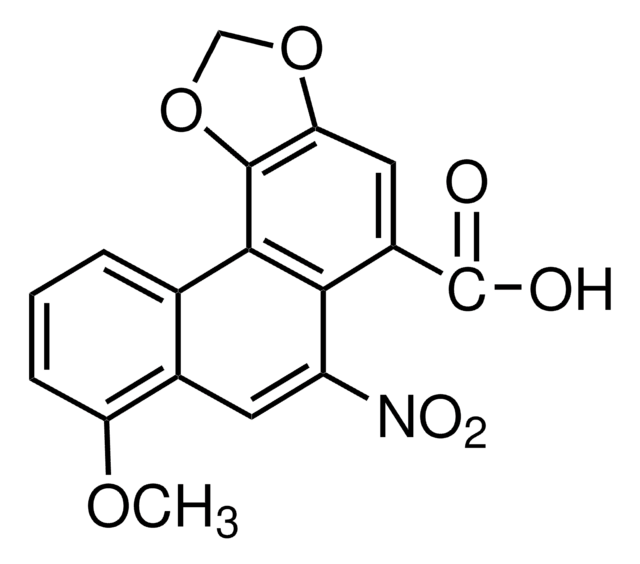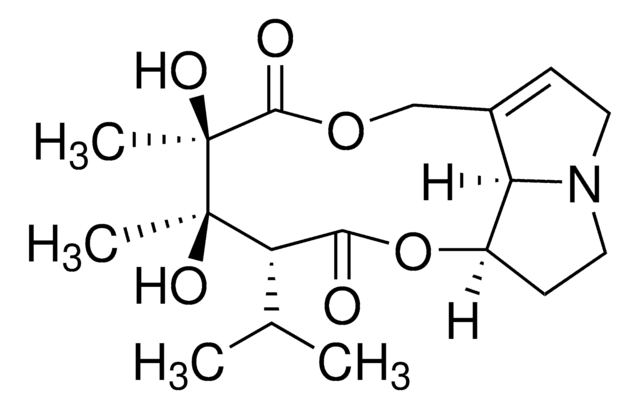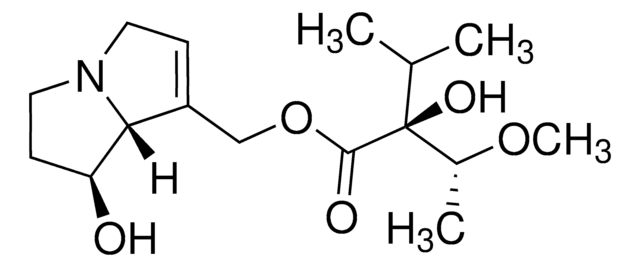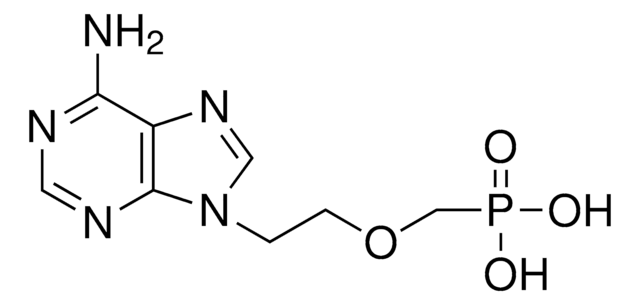A5512
Aristolochic acid I
≥90% (HPLC), powder, phospholipase A₂ inhibitor
Synonym(s):
TR 1736
Select a Size
About This Item
Recommended Products
Product Name
Aristolochic acid I, powder
assay
≥90% (HPLC)
form
powder
color
yellow
mp
269-270 °C
solubility
DMSO: soluble
ethanol: soluble
storage temp.
2-8°C
SMILES string
COc1cccc2c1cc([N+]([O-])=O)c3c(cc4OCOc4c23)C(O)=O
InChI
1S/C17H11NO7/c1-23-12-4-2-3-8-9(12)5-11(18(21)22)14-10(17(19)20)6-13-16(15(8)14)25-7-24-13/h2-6H,7H2,1H3,(H,19,20)
InChI key
BBFQZRXNYIEMAW-UHFFFAOYSA-N
Looking for similar products? Visit Product Comparison Guide
General description
Application
- as a standard for the analysis of Aristolochia sprucei crude extract by high-performance liquid chromatography[3]
- to study its effects on histone deacetylase 3 (HDAC3) aberration and renal fibrosis[4]
- to induce acute aristolochic acid nephropathy and to study its impact on miRNA and mRNA expression in mice[5]
Biochem/physiol Actions
signalword
Danger
hcodes
Hazard Classifications
Acute Tox. 3 Oral - Carc. 1A - Muta. 1B
Storage Class
6.1C - Combustible acute toxic Cat.3 / toxic compounds or compounds which causing chronic effects
wgk_germany
WGK 3
flash_point_f
Not applicable
flash_point_c
Not applicable
ppe
Eyeshields, Faceshields, Gloves, type P2 (EN 143) respirator cartridges
Choose from one of the most recent versions:
Already Own This Product?
Find documentation for the products that you have recently purchased in the Document Library.
Customers Also Viewed
Articles
Cancer research has revealed that the classical model of carcinogenesis, a three step process consisting of initiation, promotion, and progression, is not complete.
Discover Bioactive Small Molecules for Lipid Signaling Research
Active Filters
Our team of scientists has experience in all areas of research including Life Science, Material Science, Chemical Synthesis, Chromatography, Analytical and many others.
Contact Technical Service












